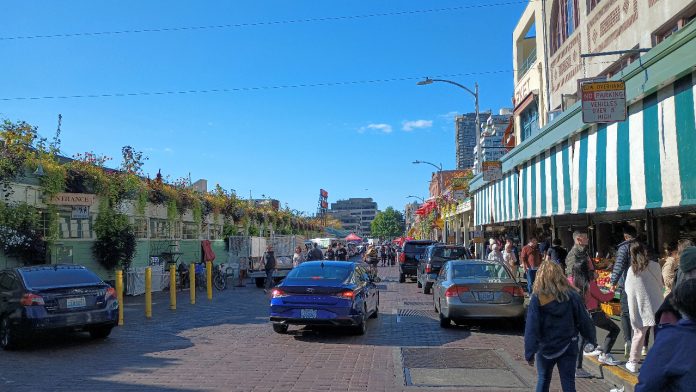
A majority of Market vendors are open to pedestrianizing Pike Place and only around 5 of 61 vendors interviewed fully opposed the idea.
Getting most vehicle traffic off the thoroughfare that is Pike Place so that pedestrians can more easily take over the space is a perennial topic of conversation in Seattle. The conventional wisdom is that while everyday residents who visit Pike Place Market may be in favor of restricting the ability of people in cars to drive right through the market along Pike Place, vendors and business owners inside the working farmers market are much less on board with the idea, and that’s why the idea hasn’t gone anywhere. A newly released survey completed by two University of Washington students turns that assumption on its head.
Tsz Him Lau and Kat Lykins, working as interns with Seattle Neighborhood Greenways, spent several days in early 2023, the slowest season for Pike Place Market traffic, conducting in-person interviews, often directly with the owners of Pike Place businesses, about the idea of restricting Pike Place itself to delivery vehicles, asking questions about loading needs and how they see the current street functioning.
The businesses they stopped at were located on every area of the Market, from the high stalls along the high traffic main arcade, to the less well-traveled areas on the lower floors. In the end, they were able to talk to nearly 70 people who have a front row seat on the current operation of the Market.
Vendor opinions tended to be more aligned with the general public than conventional wisdom held. A 2021 poll of Seattle voters conducted by Change Research found that 81% of respondents supported pedestrianizing Pike Place with accommodations for loading and unloading. It turns out, most vendors seem to be of the same mind.
Lau and Lykins’ goal wasn’t to create a statistically valid survey, but instead to more clearly understand vendors needs and ideas about traffic there, given the high frequency that vendor opposition is trotted out to push back on the idea of creating more people space at the Market.
“We were merely there to listen to them and not chip in with our opinions about the matter,” Lykins said. “We just really want to know their concerns, because their concerns are what mattered most.”
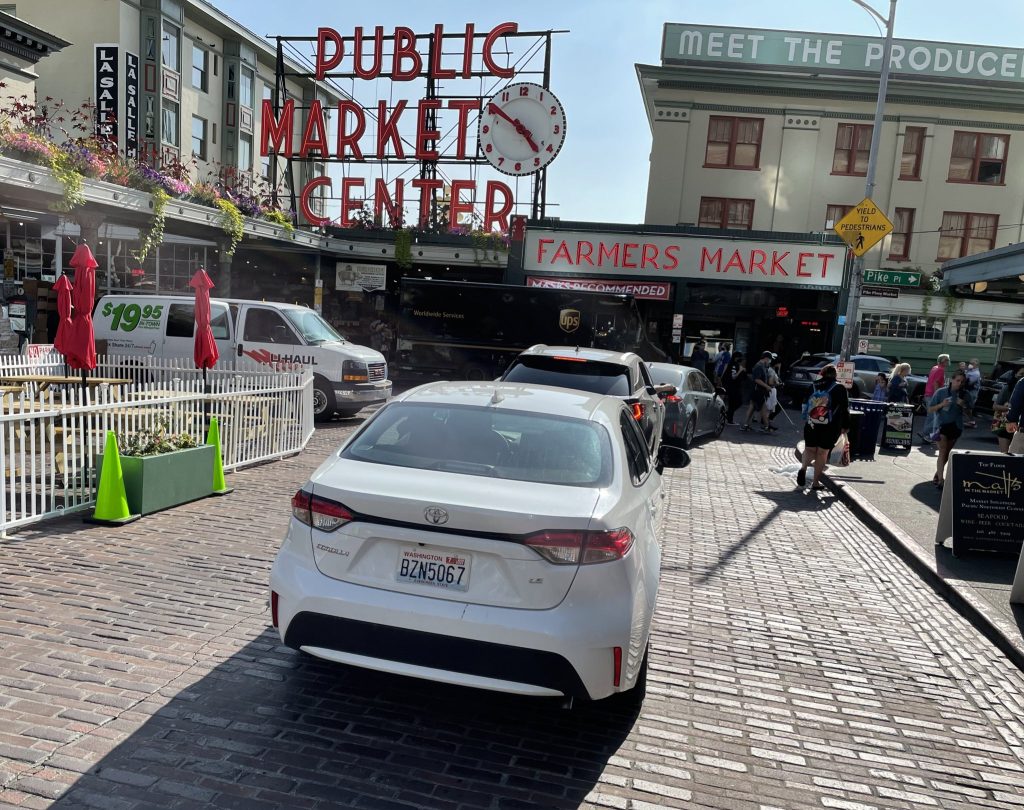
Out of the 61 individual vendors and businesses that they were able to interview, only a handful — around five — were fully against the idea of moving the Market in a more pedestrian-oriented direction. “In this group of vendors, we found that they think the street works well, and they didn’t see any conflicts between pedestrians and private vehicles, believing the cars add to the market’s character and are needed for business purposes and bulk loads,” the pair wrote in a summary of their research.
Over half of the responses collected were fully behind the idea of closing the main Pike Place corridor to through traffic, while still allowing vehicle deliveries. The rest expressed reservations with how the closure could be implemented but remained open to the idea of a change. “Provide flexibilities, limit cars but not all,” one response noted. “Market tenants should be the only ones driving through,” read another.
“We found that a lot of people tend to support the idea of pedestrianizing Pike Place Market, which is really surprising to us since we thought [they believed] that pedestrianization would bring fewer vehicles to the street, and that it will probably lower their income,” Lau said. “Yeah, we were surprised by the findings, we thought that they weren’t going to be in support just because of word of mouth… that’s kind of what we heard, that people didn’t like the idea of pedestrianization,” Lykins said.
The interviews revealed that most of the concerns vendors had were not around providing access to customers in cars, but on other issues.
“Loading and unloading was mentioned the most by vendors as they overwhelmingly want to have a specific spot which will not be taken by private vehicles,” they wrote. “Some vendors mentioned that the current mix of pedestrians, delivery trucks, and private vehicles are a dangerous and chaotic situation. We heard several horror stories about market workers and customers being hit or nearly hit.”
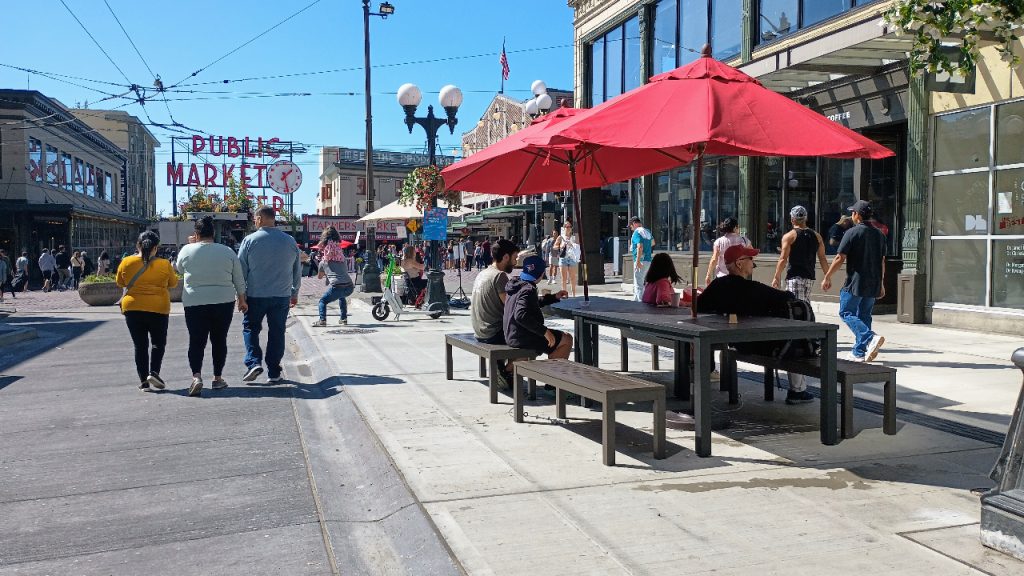
The results provide daylight between Pike Place Market’s frontline workers and business owners and the institutions that operate the Market day-to-day, along with the numerous institutions involved in advocating on behalf of the Market. The Pike Place Public Development Authority (PDA) is ultimately the entity with the power to move forward on any changes around the street’s operation, but groups like the Pike Place Market Foundation, Friends of the Market, and the Pike Place Market Constituency will all need to be brought along as well. (Full disclosure: This reporter served on the board of Friends of the Market for several years and saw up close the knee-jerk reaction that the idea of pedestrianizing the Market receives inside those circles.)
The argument against increased pedestrianization has often boiled down to, “If it’s not broke, don’t fix it.” Peter Steinbrueck, the former city councilmember and port commissioner held in high esteem by the Market community thanks to his advocacy around preserving elements of the Market over the past few decades, wrote in an op-ed in 2022 that “traffic is actually part of the success of the Market.”
“The Market would be lessened without the traffic spine and interaction of transport and service-vehicle access which is essential to the health of the retail and accessible short-term parking,” Steinbrueck added.
Virtually no one is proposing to not allow deliveries or service vehicles to access Pike Place.
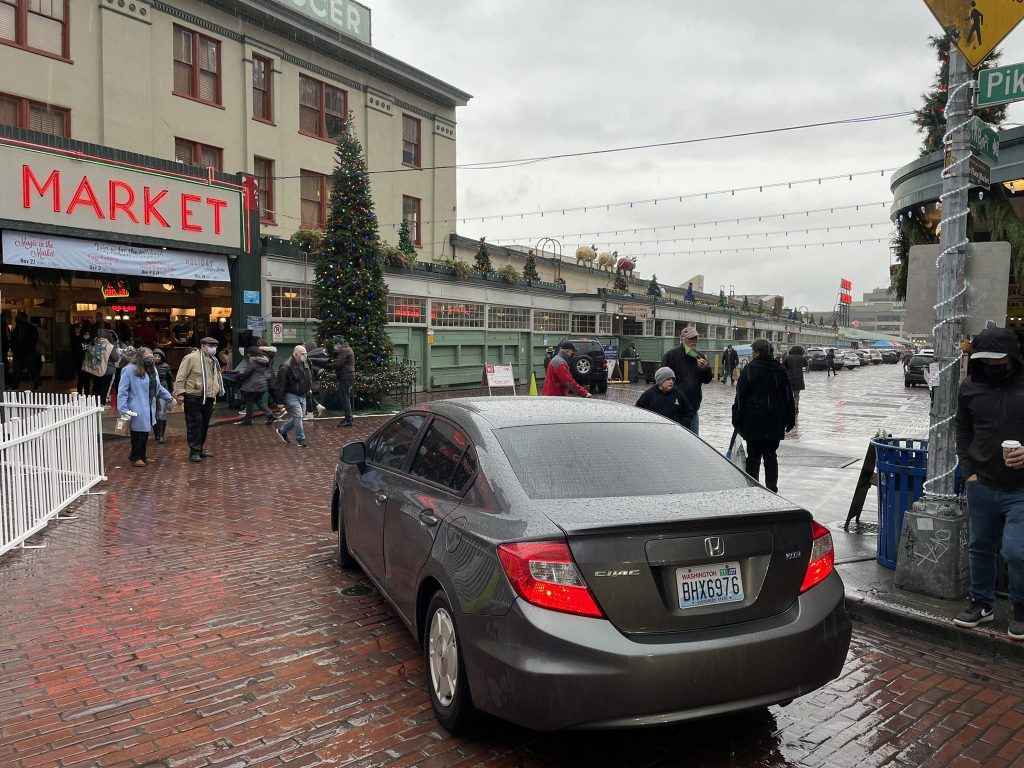
Seattle artist and Market advocate Billy King, writing in the newsletter for the Friends of the Market early last year, offered an explanation of the reluctance of the Market’s institutions to try a long-term pilot.
“The idea (of a car-less Pike Place) was finally implemented a decade or more ago by the Market landlord for one month during high summer season,” King wrote. “The results were a disaster for merchants in the four floors of retail below street level, known collectively as Down Under…. And so quietly the results of the ‘car free’ experiment in the Pike Place Market were shelved. It turned out that cars on Pike Place served as people distributors, forcing pedestrians to take a variety of routes to wind their way through the Market.”
The lower levels of the Market have never been well advertised, with many longtime Seattle residents fully unaware of some of the interesting businesses down on those floors. The city’s new waterfront, which will turn the neglected back side of the Market into a second front door, could end up providing a revitalization for the Down Under all on its own, with the new Overlook Walk providing a direct route from the new public spaces at the water’s edge to the elevators and stairwells that lead to the Market.
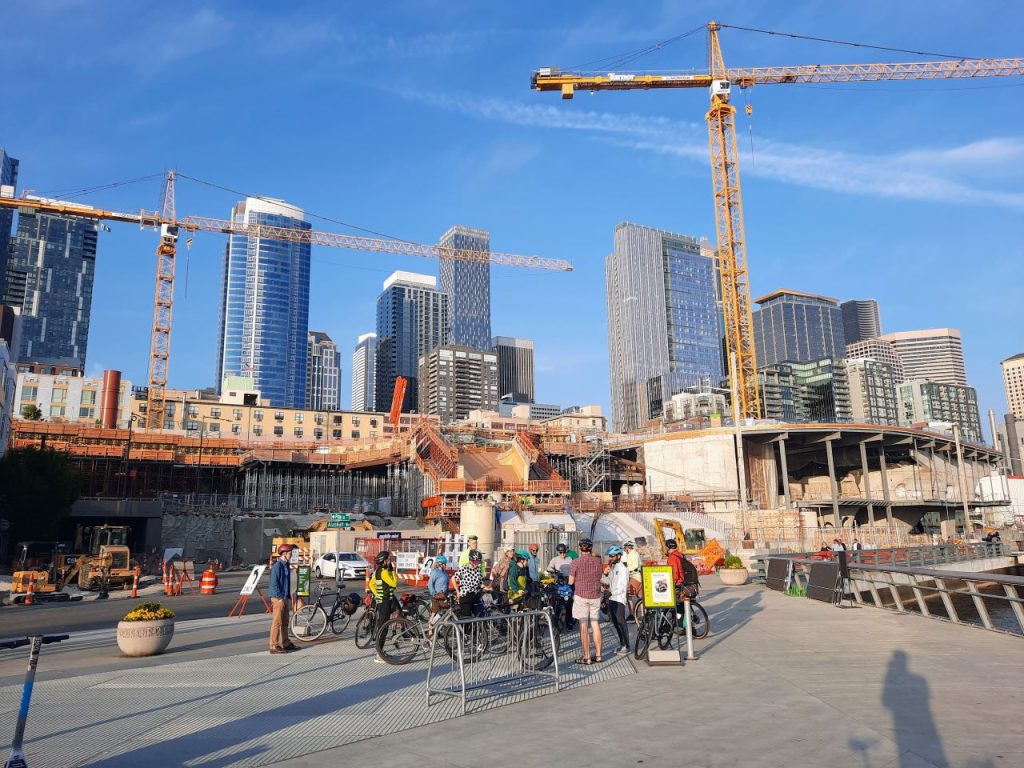
But there might also be additional things the Market could do, like better signage, to help that effort along. The radical change to come when the waterfront project is complete suggests that the Market as a whole could be at a turning point.
As for looking to leadership from Seattle’s city hall, policymakers are clearly waiting for the Market to take the lead on any potential changes.
“If you travel internationally, or even through other parts of the United States, you find great examples of working markets…that are largely pedestrian focused environments,” Councilmember Andrew Lewis, whose district includes the Market, said at a forum in September. “I don’t see why it wouldn’t work effectively at Pike Place. That said, I have great respect for the institutions that make up the Pike Place Market, and I think that for this to happen, it requires the buy-in, it requires the organizing and it requires the deliberation of the historic organs of the Market that have been the policymaking bodies that have determined…how the Market has evolved over the years.”
If that evolution is going to be able to continue, it helps to be open and honest about what the biggest obstacles to change might be, and it’s clear that at least a sizable number of Market vendors are on board with trying something new.
Ryan Packer has been writing for The Urbanist since 2015, and currently reports full-time as Contributing Editor. Their beats are transportation, land use, public space, traffic safety, and obscure community meetings. Packer has also reported for other regional outlets including Capitol Hill Seattle, BikePortland, Seattle Met, and PubliCola. They live in the Capitol Hill neighborhood of Seattle.


